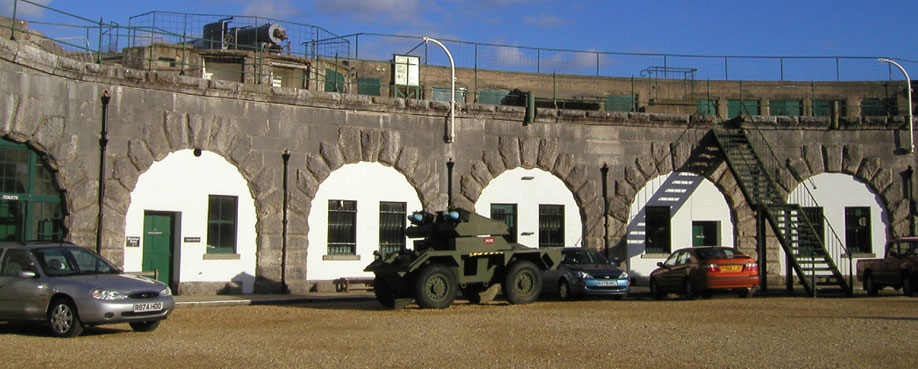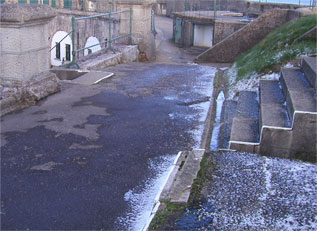Identifying and solving building problems environmentally without the use of chemicals
+44 (0) 1908 266522
Project Experience
Nothe Fort
Nothe Fort was constructed in 1872 as part of the coastal defences to protect Portland harbour in Dorset, which was becoming an increasingly vital Royal Navy base. The fort was particularly important during World War II, when the British and Americans used the harbour as a military base.
In 1956 the fort was abandoned, and in 1961 the local council purchased it. The fort and its outer gateway were listed as Grade II* in 1974.
EBS Ltd. was commissioned to carry out a diagnostic, environmental survey for moisture, damp, deterioration and environmental monitoring.

Our survey found extensive evidence of salts on walls and ceilings, and water penetration into the building. This was not surprising, as the condition of the surfaces at rampart level was poor, and provided numerous points for water seepage. Mortar sample analysis of the walls and vaulting confirmed that there was an ongoing water penetration problem.
Surprisingly an area along the side of the basement was relatively dry, indicating that some level of waterproofing still existed in this area, or that the soil bank was protecting the building rather than contributing to the damp problem.
Low levels of salts in samples from basement level indicated that moisture was penetrating from above rather than through the walls, and this suggested that the basement walls below ground level appeared to be effective against water penetration.
These results indicated that efforts to prevent water penetration into the fabric at rampart level would cure most of the damp problems in the building.
Our findings indicated that waterproofing of the area under the soil bank might not be needed, as the soil bank appeared to be protecting the building. However only further sampling and monitoring would confirm this with certainty.
We recommended that efforts should be concentrated on preventing water penetration at rampart level and to the ground along the side of the central courtyard.
Further monitoring and sampling of the walls adjacent to the soil bank was also recommended, to confirm that this was acting as an effective barrier. We thought it likely that his approach would negate the need to provide expensive waterproofing in this area, thus saving our client considerable expense.
We also advised that the ventilation throughout the building should be investigated and wherever possible returned to its original condition.
Nothe Fort is currently a museum and visitor attraction, and remains one of the best preserved forts of its kind in the country.



